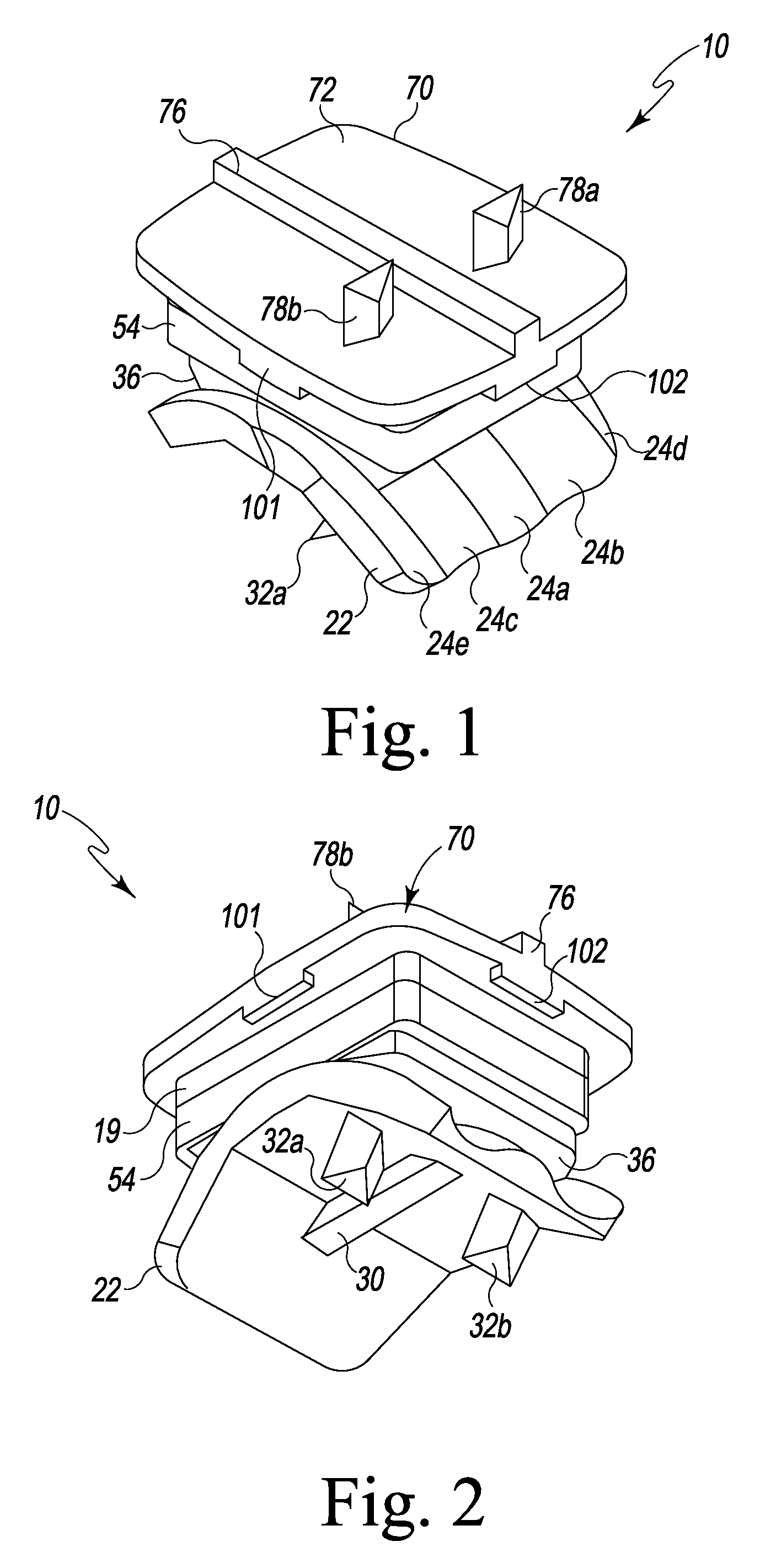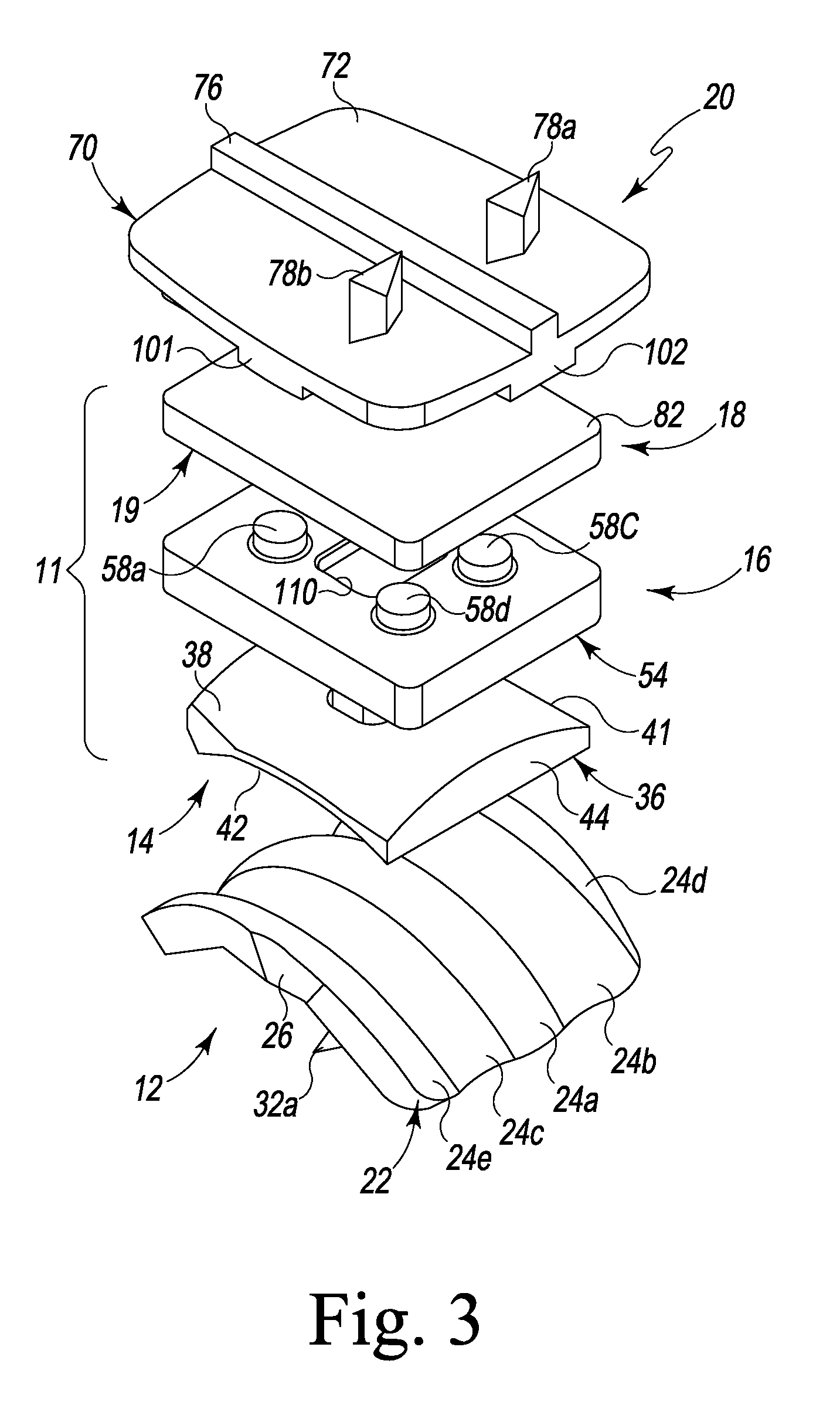Semi constrained polyaxial endoprosthetic ankle joint replacement implant
a polyaxial, ankle joint technology, applied in the field of orthopaedic prostheses and joint replacement systems, can solve the problems of limited and risky access to the ankle joint, the concept of total ankle arthroplasty has a long and relatively unsuccessful history, and the replacement of an ankle joint with an ankle prosthesis can be particularly challenging
- Summary
- Abstract
- Description
- Claims
- Application Information
AI Technical Summary
Benefits of technology
Problems solved by technology
Method used
Image
Examples
Embodiment Construction
[0040]Referring to FIGS. 1-19, there is depicted a semi constrained polyaxial ankle joint replacement implant or prosthesis 10 fashioned in accordance with the present principles. The semi constrained polyaxial endoprosthetic ankle joint replacement implant 10 (i.e. ankle implant or prosthesis) has several components that interact to provide an ankle prosthesis which mimics a natural ankle joint (i.e. as between the tibia and the talus / calceneus). Particularly, the ankle prosthesis 10 includes a talus or talar (hereinafter collectively, talar) component or plate 12 that is configured for attachment to the talus or calceneus bone (not shown), a tibia or tibial (hereinafter collectively, tibial) component or plate 20 that is configured for attachment to the tibia bone (not shown), and a dual bearing component 11 situated between the talar plate 12 and the tibial plate 20 that is configured to allow articulation or translation with respect to the talar plate 12 and allow articulation o...
PUM
 Login to View More
Login to View More Abstract
Description
Claims
Application Information
 Login to View More
Login to View More - R&D
- Intellectual Property
- Life Sciences
- Materials
- Tech Scout
- Unparalleled Data Quality
- Higher Quality Content
- 60% Fewer Hallucinations
Browse by: Latest US Patents, China's latest patents, Technical Efficacy Thesaurus, Application Domain, Technology Topic, Popular Technical Reports.
© 2025 PatSnap. All rights reserved.Legal|Privacy policy|Modern Slavery Act Transparency Statement|Sitemap|About US| Contact US: help@patsnap.com



